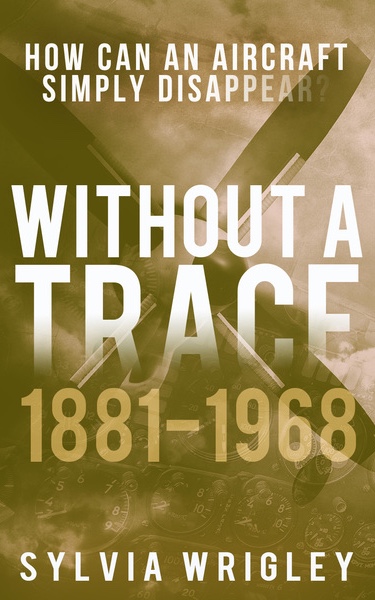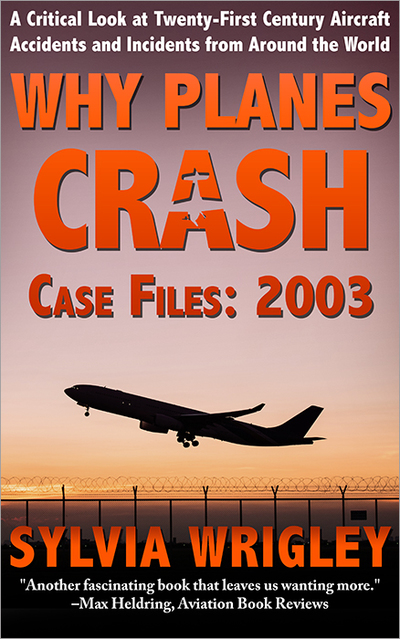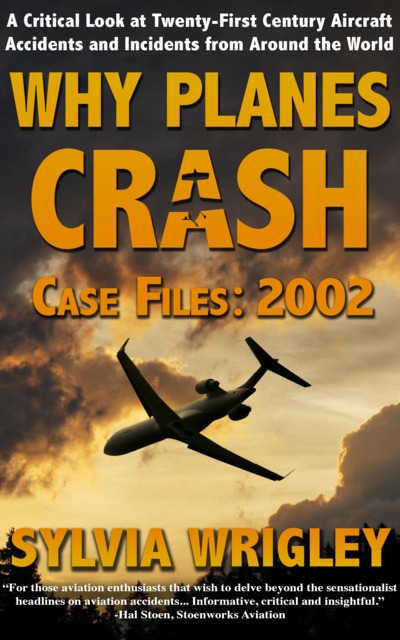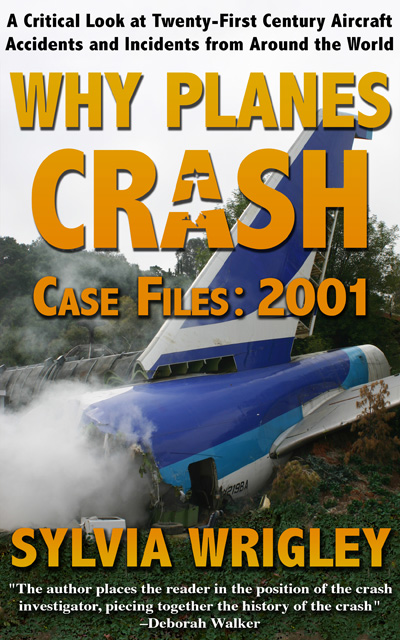Parachuting to Safety: The Pricey Plunge of the Cirrus SR22
The Cirrus SR22 is famous for its whole-plane ballistic parachute system, which can be deployed upon losing control of the aircraft, saving the lives of the pilot and passengers.
A used SR22 will likely cost you over a quarter of a million dollars to purchase and a new aircraft can run a cool million. On top of that, owners are warned to expect to pay up to a hundred thousand dollars a year to cover insurance, annual inspection and hangar fees, let alone fuel and operating costs. Cirrus know their audience, using glossy photographs and headlines of “Stylish Cabin with Lifestyle Comforts” on their website. Lifestyle comforts apparently means premium leather seats and high-power USB ports in the four-seater aircraft.
Yes, there’s a few sour grapes in my tone because I know I’ll never be able to afford to fly such a beauty. But the pointless crash of a Cirrus SR22 still makes me flinch.
The private pilot had a total flight experience of 544 hours, of which 501 were on the Cirrus SR22 which he had purchased in April 2013. The aircraft, registration N450TX, was manufactured in 2004 and had its last annual inspection in 2013. At the time of the accident in January 2014, the SR22 had flown a total of 979 hours.
On the 4th of January 2014, the pilot departed Donegal Springs Airport in Pennsylvania that afternoon, with a destination of Upshur County Regional Airport in West Virginia. Upshur County Regional is an non-towered airport with a single asphalt runway 11/29. Communications is through UNICOM, a non-government pilot advisory service used at small general aviation airports in the US. The European equivalent is a flight information service at an uncontrolled airport.
This was a private flight and there was no need to file a flight plan.
The flight progressed normally and, at about 10 miles out, the pilot contacted the UNICOM frequency at Upshur. There were no aircraft in the traffic pattern, so he planned to fly straight in to runway 29.
As he approached the airfield, he started his prelanding checklist. He had about 25 gallons of fuel in each wing, the fuel selector was set to the fullest tank, and the fuel boost pump was on. He recalled that he had extended his flaps to 50% and set the fuel mixture about 60%. He was travelling at about 100 knots.
He called the UNICOM frequency to let them know that he was on final approach at four miles out. It was 5:30pm local time and the sun was just setting. The weather was clear and visibility was good.
He was three miles from the threshold of runway 29 and around 400-500 feet above ground level when he noticed his speed was decaying. The SR-22 has a normal approach speed of 80-85 knots. He added power to keep his airspeed up.
Nothing happened.
He tried again. This time, in his words, he moved his hand to manipulate both throttle and mixture at the same time, increasing them to maximum.
Again, nothing happened.
His indicated airspeed was dropping to below 80 knots. He knew he was at or possibly just below the minimum speed for the Cirrus Airframe Parachute System . He didn’t make any attempt to trouble-shoot or shut down the engine ready for an emergency landing.
Without hesitation, he said, he pulled the red “T” handle and called MAYDAY on the UNICOM frequency. The aircraft parachute deployed. He tightened his 3-point harness and braced for impact.
The SR22 crashed into a pick-up truck travelling on a nearby road and then skidded off the road. The aircraft came to a halt between two automobile dealerships with the parachute landing on three of the cars for sale.

The pilot then realised he had not shut down the aircraft systems and did so immediately. He pulled himself out of the cockpit and backed away, noting that fuel was leaking from one of the wings.
The aircraft was badly damaged. The initial impact on the left wing leading edge had pulled the pitot tube off and ripped the lower skin. The left landing gear pierced the fuel tank, spraying aviation fuel on the road. The nose landing gear had broken off and two of the four propellors were bent back. The right wing flap was bent back towards the fuselage.
However, it was still possible to check the configuration of the aircraft. Both flaps were fully extended. The ignition switch was set to “BOTH”, the fuel pump was set to BOOST. The power level was set to MAX but the mixture control was set to just forward of the idle CUT OFF position, effectively fully lean.

One of the interesting features of the SR22 is that although there is no flight data recorder, the data on the Primary Flight Display and Multi-Function Display is recorded for maintenance and diagnostics.
25 power cycles (turning on and off again) were saved as a part of the Primary Flight Display data. When the NTSB received the data, the flight was the 22nd power cycle, which lasted two hours and 38 minutes from power on to power off.
The Multi-Function Display uses data from several other units, including GPS, altitude, engine parameters and engine monitoring. The compact flash memory card in the unit had 105 data files, including a two hour and 38-minute file recorded during the incident flight.
The data from these units showed that the initial flight had been normal. Then the aircraft entered a slow cruise for about half an hour. The engine remained at a low power setting at 2,000 rpm. The published minimum cruise rpm for the SR22 was 2,500 rpm and Continental, the manufacturer of the engine, released a service bulletin in 2009 that the engine cruise rpm settings should be no lower than 2,300 rpm.
Although the data did not record this, when the pilot reduced the power, he would have leaned the fuel-to-air mixture. As your altitude increases, the density of air decreases leading to a richer mixture, so in the SR22, the pilot uses the mixture control to lean the mixture. Then the mixture is enriched again while descending and should be fully rich for landing.
After about 30 minutes in the cruise, the pilot increased the power to 2,700 rpm and performed a series of high-performance 360°s, that is, flying in full circles at a high rate of turn.
In flight training, pilots are trained to do steep turns at a 45° angle of bank, continuing through 360° with a goal of rolling out on the original heading and altitude. In level flight, the load factor ( (the acceleration pushing the pilot into his seat) is 1 or 1G. In a 45° angle of bank turn, the load factor is +1.41 G. However, at 60°, the load factor increases to 2G: a little bit of extra bank adds a lot of additional load. A key risk in a steep turn is that the aircraft will overbank and enter a spiral dive.
For the initial 360° turns, the SR22 recorded a load factor of 2 Gs. Then for the sixth and seventh 360° turns, the SR22 reached a bank angle of 70°. During the eighth turn, the angle of bank was almost 80° with a peak vertical acceleration of 3.3Gs.
Typically, the pilot adds power during the turn, about 100 to 200 rpm, with corresponding rudder to counteract the yaw. During these turns, however, the SR22’s engine remained at a steady rate of about 2,700 rpm.
The pilot then performed an aileron roll to the left, where the aircraft turns 360° on its longitudinal axis, like a corkscrew into a cork. Normally, one starts an aileron roll (assuming one is permitted to perform aerobatics at all) by pitching the nose up into a climb to increase the altitude (minimise the altitude loss) and reduce the airspeed gain. Then the ailerons are deflected in one direction, in this case left, and the aircraft will roll on its axis. If done correctly, the aircraft will roll with only a very light load factor and come out at the same heading and altitude, with the nose slightly pitched down, which the pilot must then correct for.
However, the pilot did no preparation, entering straight into the roll. The load factor during the roll varied between 2.5 positive Gs and 0.5 negative Gs. There was a sudden but brief drop in oil pressure when the load factor went negative. As the SR 22 came out of the roll, the pitch was at 30° nose down and the rpm was reduced to under 2,000 rpm.
The pilot corrected and increased the power to about 2,500 rpm. The aircraft had lost 900 feet of altitude in the manoeuvre.
The pilot immediately performed another aileron roll to the left. This time, the SR22 was pitched up by about 19° at the start. The load factor again varied between 2.5 positive Gs and 0.5 negative Gs. The pitch and the rpm settings were more stable during the manoeuvre. As the SR 22 rolled level, the pilot started a steep turn to the left. During the 360°, the vertical acceleration averaged 2G. The flight then continued towards its destination with the low power setting of 2000 rpm.
None of this had anything to do with the power loss on final approach; however, I can imagine the NTSB were quite interested to see what the pilot, not licensed for aerobatics and in an aircraft not rated for aerobatic operations, had been up to on this short flight. Certainly, they seemed to take some pleasure in detailing exactly what manoeuvres were flown before reiterating that they were not actually relevant to the loss of power and forced landing.
The US has a legal requirement to wear a parachute for more than 60° of bank; however, as the SR22 is not certified for aerobatics, there is no information as to whether the aircraft’s parachute fulfils this obligation.
In any event, the data then showed that the flight continued normally until it entered the descent on the approach to Upshur County. As it descended, the manifold pressure and fuel flow were reduced and the temperature in all six cylinders dropped. All of this was consistent with what the lever showed: the mixture control was set far too lean and not fully rich or even at 60%.
This was clearly displayed on the Primary Flight Display. If the pilot had ever looked, he would have seen that the mixture was much too lean; he was effectively starving the engine of fuel.
The Quick Reference Checklist includes a check that the mixture should be set to the FULL RICH position before landing. The pilot said he’d completed his checklists. If he had done so correctly, he would have moved the fuel control mixture to maximum and the engine would have sprung to life.
The Quick Reference Checklist was found in the wreckage; stored in the seat back pocket behind the pilot, out of reach. There was an electronic set of checklists on the Multi-Function Display which the pilot could have used instead, but, apparently, he did not. The pilot said that he did not need to review the landing checklist, saying “I know it by heart.”

The NTSB investigation concluded that the probable cause of the accident was:
The pilot’s improper in-flight fuel mixture management and failure to use the appropriate checklist or manuals during approach to landing, which resulted in a loss of engine power.
Cirrus Aircraft has been adding an expanded mixture management procedures to the Pilot Operating Handbooks to their aircraft, which pilots must keep on board for reference. However, this would not have helped in this situation, where the pilot confirmed that the Pilot Operating Handbook was in the baggage compartment.
The SR22 was about 0.76 nautical miles (1.4 km or 4,800 feet) from the runway threshold when the parachute system was activated. At that point, the aircraft was travelling 82 knots and was 637 feet above ground level. I’m saddened that the NTSB did not simulate a partial-power glide to landing on the runway. I certainly can’t imagine that a forced landing would have caused more damage.
Under the field marked How could this accident have been prevented? the pilot wrote: “Since I am not sure of the cause, or exact time, of the engine loss of power, I am not sure anything could have been accomplished to avoid this accident.”








Is the Cirrus becoming the flying set’s Antarean Parakeet Gland(*), something bought by rich idiots to impress other rich idiots? The rescue chute sounded like a good idea when it came out, but packaging it with expensive luxuries makes it less relevant. I can’t even tell whether this person was blowing smoke when he filled out the how-to-have-prevented field, or genuinely clueless about what he did wrong — I spotted the debatable mixture right off and it has been a long time since I actually flew a plane. I’m as surprised as you are that the NTSB didn’t look at the partial-power descent; ISTR being taught that the Cessnas I was learning in could glide 5 miles from 3000 feet AGL with no power, which suggests he could have made it to the runway if he hadn’t panicked.
(*) See https://www.verbalworkout.com/u/u151/u717461.htm if unfamiliar with _The Hitchhiker’s Guide to the Galaxy_
NB: that glide ratio was for a fully-loaded plane; somebody soloing in a 4-seater would probably be able to get further, absent a headwind. However, that would require that the pilot have actually memorized what the correct airspeed is for such a glide — and we already know that he didn’t remember everything he thought he remembered.
It is rather concerning that the pilot went for the parachute straight away, thus turning a controlled descent into an uncontrolled one. It also doesn’t sound as though he gave any thought to what he might land on.
No doubt there have been situations in which whole-plane parachutes have saved lives. But perhaps they can also cause new problems if some pilots treat it as the first resort in case of engine trouble, or if the decision of if/when to deploy it becomes a distraction.
I suspect that there could be some interesting psychological effects to consider.
“The private pilot had a total flight experience of 544 hours, of which 501 were on the Cirrus SR22“
This says it all. Rich boy gets PPL with 53 hours dual and solo in a trainer (152), and goes the next day to buy a hi-performance SR22.
I am surprised it took the Cirrus 501 hours to bite him, Abused aircraft are like abused dogs, they will take it for a while but if you keep it up they will bite.
Why was he at 500’AGL 3 miles out? Did he not bother to fly a proper traffic pattern? Ok, stupid question, of course not. Why bother flying crosswinds, downwinders, bases, just come in on a straight in final like the bigboys on IFR approach. After all, you spent most of a million dollars on a fancy airplane that should fly itself.
The most worrying thing is the NTSB’s response. They should have roasted this guy’s pilots certificate on network news.
To be fair, enforcement is outside of the NTSB’s remit. However the excessive detailing of the aerobatics, which was not relevant to the actual crash, must have been for the FAA’s benefit. I would like to think that his certificate was in fact set alight soon after.
FSDO should force him to be re-examined, and when he fails, suspend his license, AND revoke the certificates of his flight instructor(s).
Additionally, WV State Police (and/or District Attorney) should invoke their authority to charge him with reckless endangerment, and whatever other felony criminal charges they can.
Too bad he didn’t pull the wings off during his “airshow”.
i am with you all the way i own a cirrus sr22 and there are all to many rich guys with money with little experience it gives the cirrus a bad name
I look forward to the day when all airports have an AI that monitors all traffic, and all conditions of each aircraft in its airspace. The AI could be made to be in constant (non-verbal) radio communication with each aircraft, monitoring their condition in real time. The AI cold easily have diagnosed this and radioed the pilot verbally instructing them to increase the fuel mixture immediately. Also AIs can of course be running on aircraft doing constant in flight surveillance. In the age of computers I’m again surprised (as I frequently am reading these great articles) that we don’t have far more computer flight tools.
Great writeup, thanks Sylvia.
There are two problems with extensive automation:
If the automation generates too many alerts, it’ll overload the pilots and strip them of the cognitive capacity to fly the aircraft unless they ignore these alerts outright.
People become dependent on it even in situations when it is useless; as examples, take Tesla drivers crashing into things, or the pilots on Ethiopian Airlines flight 302 focusing on trying to engage the autopilot/autothrottle instead of troubleshooting and flying (see Sylvia’s recent blog post).
“You can be dumb as a rock and still fly thanks to our AI” doesn’t sound like a recipe for fewer incidents to me.
No, just plain old fashion no!
The pilot needs to learn how to fly the plane, unassisted.
So many of the accidents Sylvia reports on, this one included, happened due to one failure; the pilot/s stopped flying the plane.
Why do such modern aircraft have a mixture control at all? This function was necessary in the days of carburettors and mechanical fuel injection but not in today’s electronic age. All modern cars adjust the fuel/air mixture automatically with increasing or decreasing altitude if for no other reason than to comply with emissions laws. Why do technically advanced and expensive aircraft such as the Cirrus have not this function?
A guess: somebody would have to cough up the money to prove to the FAA’s satisfaction that the engine and associated apparatus were safe. Car manufacturers need only prove that the engine meets emission standards — and can spread the cost over hundreds or thousands of times as many units as an airplane engine manufacturer can.
And after the mess Boeing made of the 737-MAX, the FAA might be \very/ careful about certifying something that could choke off the fuel supply at the wrong moment.
https://www.avweb.com/multimedia/why-new-aircraft-engine-ideas-rarely-succeed/
Because if the electrical system goes down (and they DO go down for a variety of reasons), you can’t just pull over and park on the nearest cloud while waiting for a tow truck.
would it be possible then to have it automated with a manual override to control the mixture in case of electronics failure? seems that would be the best of both worlds? when electronics works makes it easier for pilot less things to go wrong but in failure he can adjust manually?
There is an aftermarket unit STCed for a few planes. It looks like a Rube-Goldberg that I would not allow near an airplane I was flying.
https://flightenhancements.com/auto-lean–auto-heat.html
FWIW, Big Radial engines have auto-rich/auto-lean. The NTSB indicated that the pilots leaving the right engine in auto-rich was a probable cause of the Lynyrd Skynyrd crash.
How you manage to apply+ 2.5g to -.5g during an aileron roll (normally a 1g manoeuvre (apart from the initial pitch up) I have no idea. Good job he wasn’t lower!! Instead of trying to perfect his aerobatics more attention to essential detail would have been more appropriate.
Twice! I was kinda impressed by that.